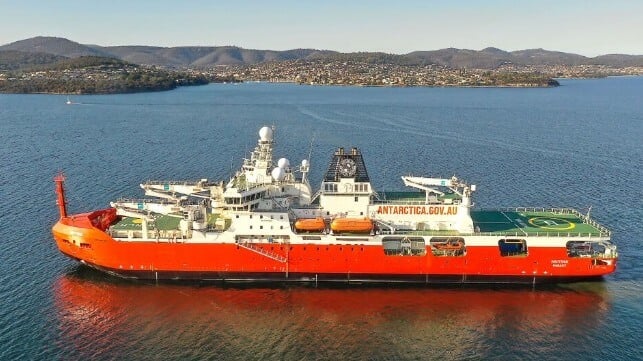Australian Icebreaker Nuyina to Visit Remote Islands for Scientific Mission

Australian expeditioners and scientists are set to return to the uninhabited and remote territories of Heard Island and McDonald Islands (HIMI) after more than two decades. The voyages that will take place aboard the RSV Nuyina are being described as critical for understanding the current state of the islands and ensuring protection from the threats of climate change.
The Australian Antarctic Program (AAP) announced that in September, the country’s icebreaker, the RSV Nuyina, will make a debut voyage to HIMI. The islands form part of the most undisturbed and dynamic ecosystems in the world and where the topography and weather are notoriously bad.
In December, the vessel will return to HIMI for a second voyage. In both voyages, the icebreaker will take expeditioners and scientists to check on the state of the islands’ flora and fauna and carry out marine science and surveys.
The vessel, which was plagued by commissioning issues, has also been criticized for sluggishness in conducting scientific missions. The organizers look to accelerate the deployment of the 160-meter (525-foot) long vessel that started construction in 2017 and was finally handed over in 2021. Mechanical issues, however, kept her out of service till 2023.
The two islands of Heard and McDonald are two of Australia’s most remote territories located in the southern Indian Ocean, some 4,000 kilometers south-west of the Australian mainland. Heard Island has been described as a land of fire and ice owing to the fact that it is home to Australia’s only active volcano and has 12 major glaciers carving through the landscape. Penguin and seal colonies dot its coastline.
Both islands have not been visited for more than two decades, with Australia now planning expeditions to conduct terrestrial and marine surveys that can help inform fisheries management and also undertake the mapping of the bathymetry (sea floor) around the islands. The missions will also involve conducting climate science to better understand glacial retreat and surveying the current status of threatened seabirds and seals.
On the seabirds and seals, the scientists will particularly want to know if the H5 bird flu, which has killed hundreds of thousands of seabirds and seals around the world, has reached HIMI. This is due to the fact that some affected animals have been found on the French Kerguelen and Crozet sub-Antarctic islands, which are only 450 kilometers from HIMI.
“Understanding the current status and trends of the wildlife, ecosystems and environment is essential for managing this unique world heritage area and marine reserve,” said Annette Dunkley, AAP Protected Areas and Species Director.
In the first voyage in September, Nuyina will sail to Heard Island for 10 days with a science team of seabird and seal ecologists and glaciologists. Another team will have the responsibility of setting up state-of-the-art reflectors around the island to improve satellite geo-positioning. In December, the vessel will return to HIMI for 25 days with a team that will focus on marine science and surveys of terrestrial ecosystems.
The two voyages come just months after Australia significantly expanded the marine reserve, placing almost 90 percent of the exclusive economic zone around HIMI under protection. Following the move in January, visitation is strictly controlled to limit human impacts and the possible introduction of non-native species.
